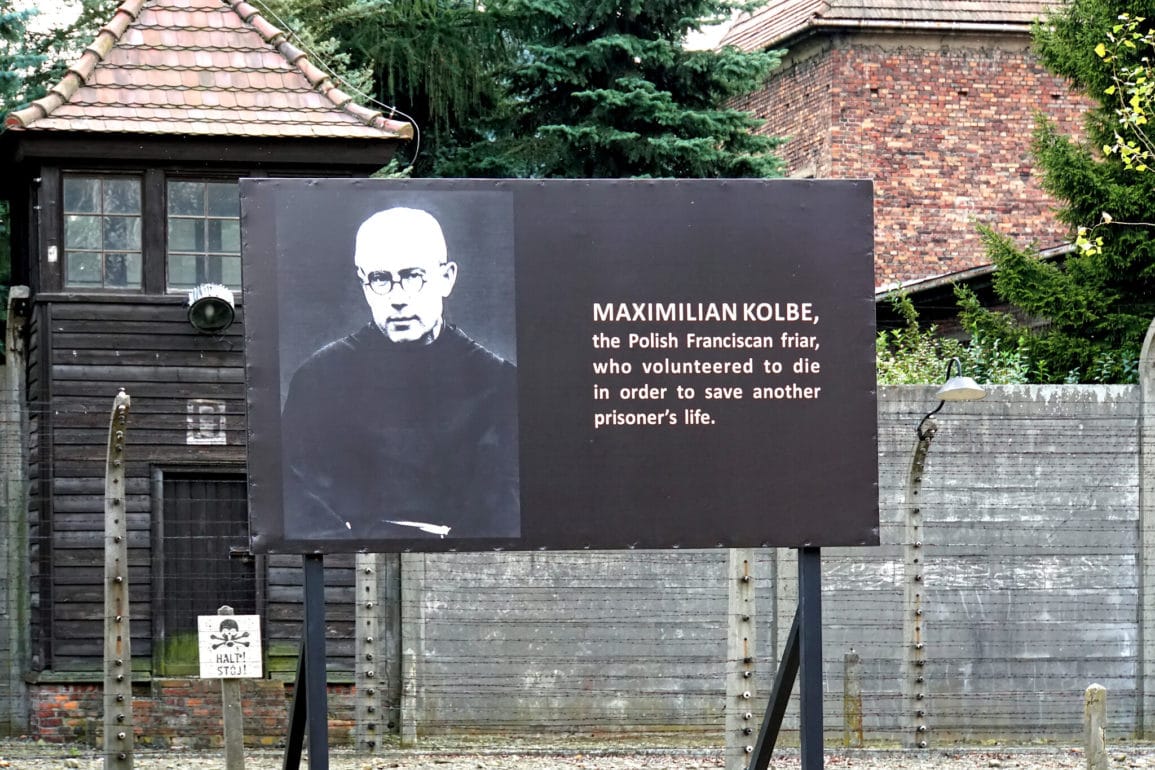On the 128th anniversary of the birth of the saint, the Polish Bishops’ Conference presented some unknown facts from the life of St. Maximilian Maria Kolbe.
The 128th anniversary of the birth of St. Maximilian Maria Kolbe – the founder of the Knighthood of the Immaculate, the monthly ” Rycerz Niepokalanej (EN: Knight of the Immaculate )”, Radio Niepokalanów, and the monastery in Niepokalanów. The Franciscan voluntarily accepted death by starvation in the Auschwitz-Birkenau camp, saving his fellow prisoner – Franciszek Gajowniczek.
Raymond Kolbe was born on 8th January 1894 in Zduńska Wola. He entered the Franciscan Order in Lviv, where he received the name Maximilian. He completed his studies in Rome with the defense of two doctorates (in philosophy and theology), and there he also founded the association “Knighthood of the Immaculate.” After returning to Poland, he established the Niepokalanów Monastery (known as the “Castle of Mary”) in the village of Paprotnia (Teresin district, Mazowieckie voivodship) and started publishing the magazine “Rycerz Niepokalanej (EN: Knight of the Immaculate )”.
Today is the 128th anniversary of the saint’s birth, so on this occasion, we would like to remind you of some interesting information about his life.
-
He was baptized with the name Raymond
The future saint of the Catholic Church was baptized with the name Raymond. When Kolbe began his novitiate, he took the name of Maximilian, and during his perpetual vows, in honor of the Mother of God, also his middle name – Maria.
-
Family
His father Juliusz Kolbe was an ethnic German, he worked as a weaver. Mother – Marianna Dąbrowska worked as a nurse. The family belonged to the Third Order of St. Francis.
-
Passionate about space, army, and military
Kolbe showed above-average mathematical and physical abilities. He completed his studies in Rome with the defense of two doctorates: in philosophy and theology. He is also the author of the article: “Etereoplan. About the interplanetary vehicle ”, which he designed himself. In his youth, Raymond wanted to become a soldier. He was interested in the military and matters related to the military.
-
Revelation of the Blessed Virgin Mary
When Kolbe was 12 years old, the Blessed Virgin Mary appeared to him in the church in Pabianice, holding two crowns: a white one and a red one. She asked him if he wanted to accept it, making it clear that white means purity and red means martyrdom. He replied that he wanted both of them. The vision touched him deeply and set the direction for his further life.
-
The Order of the Franciscans
In 1907, Raymond and his older brother decided to enter the Franciscans. Three years later another brother, Józef, also joined them. In Lviv, in front of the image of Our Lady of Graces, Kolbe devoted his life to the intercession and protection of Mary.
-
Knighthood of the Immaculate
Under the influence of a wide-ranging anti-Catholic action, which he witnessed in Rome, after consulting with his confreres and with the consent of his confessor, Maximilian Maria founded the Knighthood of the Immaculate (Militia Immaculatae). The purpose of this association was to fight for the conversion of schismatics, heretics, and freemasons. To carry out this task, members of the Knighthood were to devote themselves to the total and exclusive service of the Blessed Virgin Mary.
-
“Knight of the Immaculate” and the monastery in Niepokalanów
In January 1922, Father Maximilian began to publish ” Rycerz Niepokalanej (EN: Knight of the Immaculate )” and “Knights of the Immaculata” (a magazine for children). He was the first editor of these magazines. After leaving for Japan, he was replaced by his brother, Fr. Alfons Kolbe. In 1927, Father Kolbe moved from Warsaw to Teresin and founded a monastery here, which even had its own fire brigade. He created a similar complex in Japan, he called it “the Garden of the Immaculate.” It included: a monastery, a church and a thriving publishing house.
-
Martyr on the facade of Westminster Abbey
St Maximillian is one of the martyrs honored with a statue on the facade of London’s Westminster Abbey.
-
The death camp in Auschwitz-Birkenau
On 28th May 1941, Fr Maximilian was sent to the Auschwitz-Birkenau camp. He was given the number 16670. “Trust in the Immaculate, you young people will live. I will not survive the camp, but you will be saved ”- he repeated to his fellow prisoners, who remembered him as a man full of humility, peace, and trust in God.
-
Martyrdom
In July 1941, after one of the prisoners had escaped, the camp commandant sentenced ten men to death by starvation. The Franciscan was not in this group. However, Kolbe decided that he would voluntarily switch with another prisoner. In this way, he saved the life of Franciszek Gajowniczek. The monk died on the eve of the Assumption of the Blessed Virgin Mary – 14th August 1941, finished off with an injection of phenol. Gajowniczek survived the camp, lived to a ripe old age. He died in 1995 at the age of 94. He was buried at the monastery cemetery in Niepokalanów.
-
Beatification and canonization
On 17th October 1971, Pope Paul VI personally beatified Father Maximilian Maria Kolbe. The canonization was performed by Pope John Paul II on 10th October 1982.
-
Patron of honorary blood donors, families, and electricians
St. Maximilian Maria Kolbe is the patron of families, electricians, the Archdiocese of Gdańsk and the Diocese of Koszalin, and since 1999 also of honorary blood donors.










